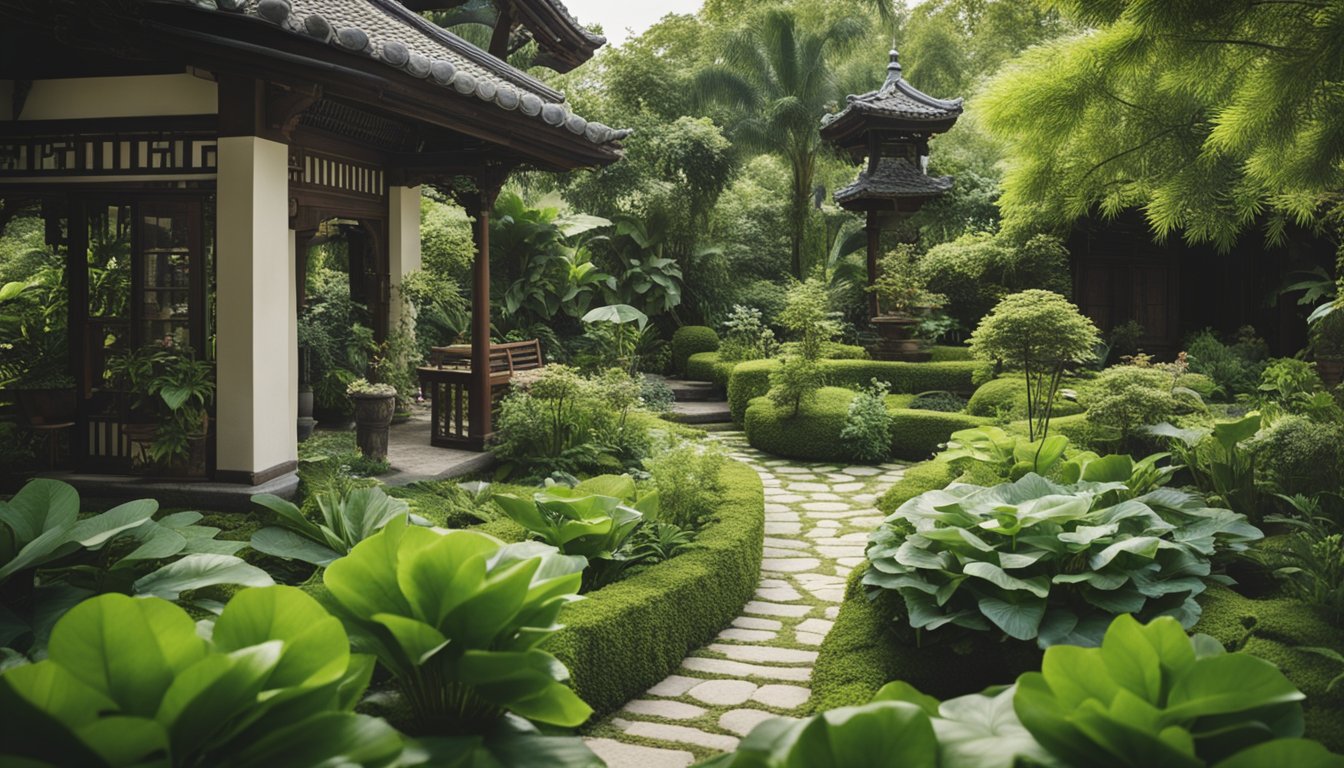Late updated: 11 Mar 2025 13:03
Written by: James Whitaker
Exploring Cultural History of Garden Traditions: Unveiling Timeless Practices
For millennia, gardens have been more than just collections of plants; they are reflections of our cultural fabric. From the intricate designs of Japanese Zen gardens to the grand landscapes of European palaces, these green spaces provide vital insights into the societies that crafted them. Gardens hold a unique place in human history, offering both aesthetic pleasure and insights into cultural heritage.

Exploring gardens through a cultural lens allows us to appreciate not only their visual appeal but also the traditions, beliefs, and historical circumstances that shaped them. Each garden tells its own story, whether it is a Persian garden representing paradise or a native Australian garden showcasing biodiversity. From ancient times to the present, the evolution of garden practices provides a fascinating window into human activity and innovation.
As we journey through the rich tapestry of garden traditions, we uncover layers of human creativity and meaning encapsulated in these dynamic spaces. By understanding the art and symbolism embedded in gardens, we gain a deeper connection to our shared past and the cultural contexts that continue to shape our world today.
Key Takeaways
- Gardens reflect cultural heritage and human history.
- Symbolism and aesthetics reveal societal values.
- Historical garden practices offer insights into cultural evolution.
Historical Perspectives on Garden Practices
Our exploration of garden history reveals significant transformations influenced by cultural shifts, social dynamics, and political events. These changes reflect how societies have interacted with nature and how gardening has evolved as part of cultural identity.
Antiquity to the Medieval Era
In ancient civilisations, gardens served as more than just sources of food. In Egypt, gardens functioned as symbols of order and harmony, reflecting the Egyptians' spiritual beliefs. In Roman times, gardens were designed with elements such as fountains and statues, serving as spaces for leisure and philosophical contemplation.
During the Medieval period, monasteries in Europe became centres for garden innovation. Monastic gardens were structured for both utility and meditation, demonstrating a blend of religious function and early botanical study. Gardens in this era often mirrored societal and hierarchal structures, also influenced by Medieval social and political dynamics.
Renaissance to Modern Day Developments
The Renaissance marked a significant shift in garden design. Italian gardens introduced geometric layouts and symmetry, embodying human control over nature, an extension of Renaissance humanism.
By the 18th century, English landscape gardens broke from rigid forms. They embraced naturalistic styles, a movement reflecting Enlightenment ideals and progress in gardening practice.
Modern developments see gardens becoming political canvases in urban settings, part of social history. Various cultural histories now merge, producing diverse garden styles, employing contemporary horticultural techniques. This reflects our changing relationship with the environment driven by growing anthropological and sociological awareness.
Symbolic and Aesthetic Elements in Gardens

Gardens, across cultures, epitomise both symbolic meanings and aesthetic values. Their design often includes elements representing peace, growth, and cultural ideals. The following insights explore the marriage between aesthetics and symbolism in garden landscapes.
The Role of Tranquility and Renewal
In many traditions, gardens are sanctuaries of peace and renewal. Japanese gardens, for instance, use elements like water and rocks to resemble natural landscapes, creating a sense of calm and continuity. Water, especially, is a powerful symbol of life and constant change, epitomising the cycle of renewal. By integrating natural elements carefully, gardens become places of meditation and self-reflection, where beauty and peace coexist. The use of symmetry and balanced compositions reinforces a feeling of harmony.
Fertility and Seduction: Social Underpinnings
Gardens have long been associated with fertility and seduction, drawing on cultural symbols and social practices. Ancient Persian and Egyptian gardens often featured lush, green surroundings as metaphors for fertility and abundance. These spaces were also places of romance, where human imagination intertwined with nature’s beauty. In this setting, flowers, fruits, and even the design of the pathways could play a role in the art of seduction, serving as silent communicators of nature’s allure.
Gardens as Cultural Constructions
The cultural construction of gardens is a testament to human ingenuity and values. They reflect diverse influences, such as religion, philosophy, and artistry. In European Renaissance gardens, geometry and mathematics dictated design, exemplifying human reason and artistic excellence. Similarly, Chinese and Japanese gardens draw on philosophical principles to depict idealised natural worlds. Despite their design differences, all gardens express symbolic meanings through aesthetic choices, highlighting cultural beliefs and artistic priorities.
Frequently Asked Questions

Gardens offer profound insights into cultural identities, revealing unique values and beliefs. By tracing their evolution, we uncover their significance and transformations, showcasing how these spaces serve as platforms for cultural expression.
What significance do gardens hold in different cultural traditions?
Gardens have been integral to various cultures, serving numerous roles. They often mirror social hierarchies, spiritual beliefs, and practical needs. In some societies, gardens provide a sacred space, while in others, they represent wealth and status. These spaces connect people to nature, reflecting cultural ideals about beauty and harmony.
Can you outline the evolution of gardening practices through the ages?
Gardening practices have transformed significantly throughout history. In ancient times, gardens were primarily functional, focusing on food and medicinal plants. During the Renaissance, ornamental designs gained popularity, emphasising aesthetics. Industrialisation brought about new techniques and technologies, enhancing efficiency. Today, gardening incorporates sustainable practices, integrating historical methods with modern innovations.
How do traditional gardens reflect the values and beliefs of a society?
Traditional gardens are a canvas of cultural expression. They often reflect communal values, such as harmony with nature or spiritual symbolism. For instance, Japanese Zen gardens echo principles of balance and peace, while European formal gardens display order and symmetry, corresponding with societal ideals of control and elegance.
In what ways have gardens been used as a means of cultural expression?
Gardens serve as vibrant expressions of cultural identity. They narrate stories and traditions through their design, plant selection, and maintenance methods. For instance, the use of specific plants can honour ancestry. Festivals and ceremonies held in gardens often highlight historical events, further cementing their role in cultural storytelling.
What are some prominent gardening practices rooted in historical tradition?
Many traditional practices endure because of their cultural resonance and effectiveness. Indigenous peoples often employ companion planting to enhance growth and deter pests. In Asia, terraced gardens maximise space in hilly regions. These methods reflect centuries of knowledge, adapted to suit climate and societal needs, continuing to inspire modern landscapes.
How have the functions and designs of gardens changed over time in various cultures?
Gardens have evolved from utilitarian plots to spaces of leisure and beauty. Early designs prioritised function, focusing on sustenance. As societies developed, gardens became more decorative, with elaborate layouts and exotic plants symbolising affluence. Contemporary gardens integrate both aesthetics and ecology, addressing environmental concerns while preserving cultural heritage.
